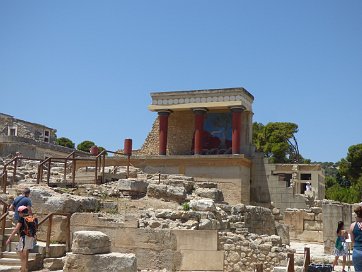Settled as early as the Neolithic period, the name Knossos survives from ancient Greek references to the major city of Crete. The palace of Knossos eventually…
The palace was abandoned at some unknown time at the end of the Late Bronze Age, c. 1380–1100 BC;[5] the reason is unknown, but one of the many disasters that…
In the First Palace Period (around 2000 BC), the urban area reached a size of as many as 18,000 people
Sir Arthur John Evans FRS FBA FREng (8 July 1851 – 11 July 1941) was a British archaeologist and pioneer in the study of Aegean civilization in the Bronze Age.…
Kouloura or rounded pit in the west court of Knossos Palace These were discovered in 1903 and nick-named 'kouloures', or koulouria after the circular bread-like…
It is believed by some that the Minoan Palace of Knossos is the same palace that Greek mythology refers to in the Minotaur story.
According to legend, Theseus,…
According to legend, Theseus,…
